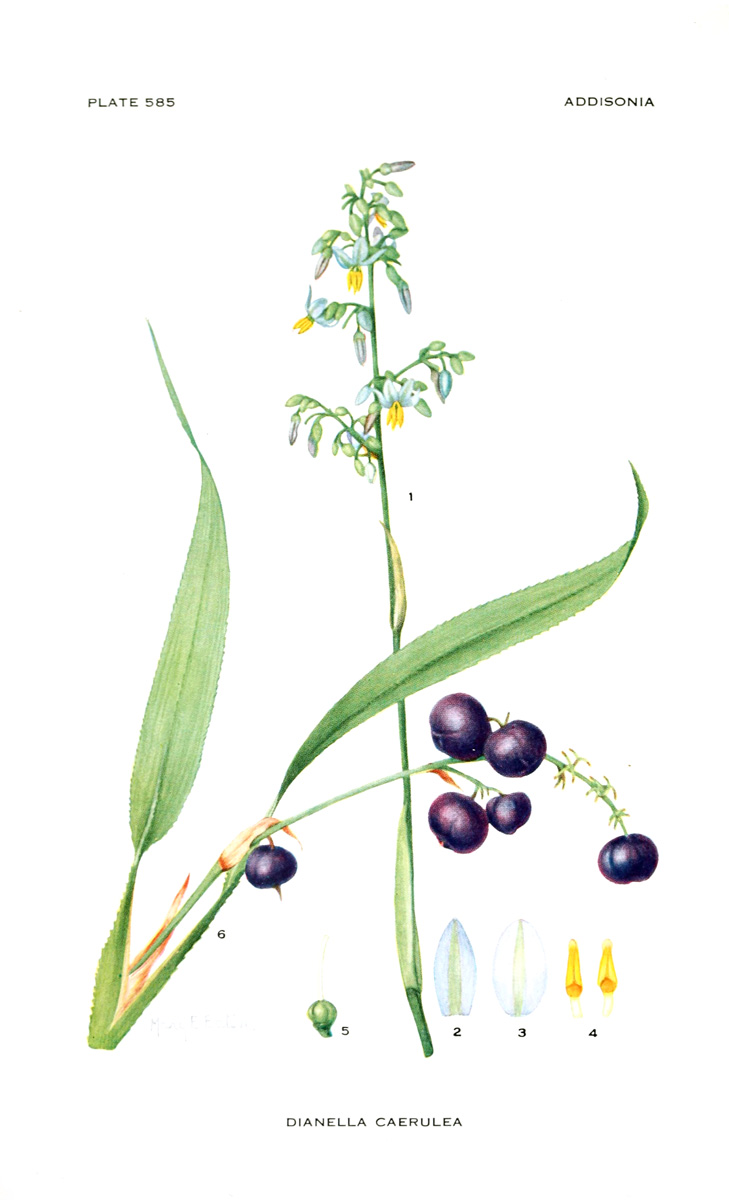Flax Lily

Origin: Australia, Africa, South-east Asia, the Pacific Islands, New Zealand.
Family: Asphodelaceae
Subfamily: Hemerocallidoideae
Scientific Name: Dianella spp.
Folk Names: Blue flax lily, blueberry lily
Indigenous (Noongar) Names: Mangard (D. revoluta)
Magical
Element: Water
Day: Wednesday
Planet: Neptune
Zodiac: Aquarius
Deities: Diana
Magical Properties: Emotion, beauty, compassion, harmony, creativity, peace, binding
Substitutions: Kangaroo Paw
Medicinal
Indigenous Medicinal Uses (Dianella revoluta):
- Decoctions of the leaves were consumed to relieve headaches.
- Decoctions of the rhizomous roots were drunk to treat colds.
Practical
Flax lily is a popular landscaping plant, due to it’s winter foliage and colourful berries.
Indigenous Uses:
- Flax lily roots were pounded and roasted or steamed to eat.
- The leaves were used to make string, cord, and weave baskets.
- The berries of some species are edible, eaten raw or cooked.
Botanical
The genus of Dianella contains roughly 40 species, half of which are native to Australia.
Type: Tufted herb
Plant Height: 0.5-1.5m
Leaves: Narrow, grass-like leaves up to 85mm long
Flowers: 1-2cm across with 3 sepals and 3 petals of similar size, usually blue/purple, sometimes white
Fruit: Bright indigo-coloured berries ~1cm across
Etymology:
- Dianella is derived from the Roman goddess Diana.
- Flax refers to the flowers, which look similar to those of flax species;
- Lily is due to the past arrangement as part of the lily family.
In the Garden
Type: Perennial herb
Light: Partial to full shade
Water: Drought tolerant once established
Soil: Well-drained
Tips:
- Plant under full shade for hotter, drier climates.
- Spreads (slowly) via underground rhizomes. You can propagate by dividing and spreading out clumps.
- Fertilise in early spring, with a fertiliser appropriate for azaleas.
